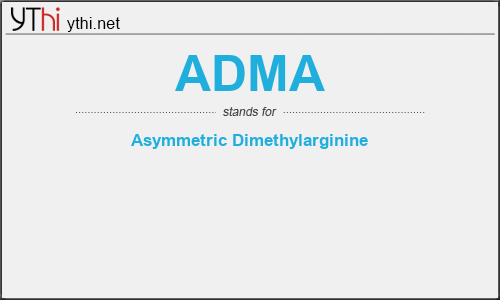What does ADMA mean? What is the full form of ADMA?
The full form of ADMA is Asymmetric Dimethylarginine. It’s used on Medical ,Anatomy & Physiology in Worldwide
Asymmetric dimethylarginine is a naturally occurring chemical found in blood plasma. It is a metabolic by-product of continual protein modification processes in the cytoplasm of all human cells. It is closely related to L-arginine, a conditionally essential amino acid.
Endothelium plays a crucial role in the maintenance of vascular tone and structure. Endothelial dysfunction is known to precede overt coronary artery disease. A number of cardiovascular risk factors, as well as metabolic diseases and systemic or local inflammation cause endothelial dysfunction. Nitric oxide (NO) is one of the major endothelium derived vaso-active substances whose role is of prime importance in maintaining endothelial homeostasis. Low levels of NO are associated with impaired endothelial function. Asymmetric dimethylarginine (ADMA), an analogue of L-arginine, is a naturally occurring product of metabolism found in human circulation. Elevated levels of ADMA inhibit NO synthesis and therefore impair endothelial function and thus promote atherosclerosis. ADMA levels are increased in people with hypercholesterolemia, atherosclerosis, hypertension, chronic heart failure, diabetes mellitus and chronic renal failure. A number of studies have reported ADMA as a novel risk marker of cardiovascular disease. Increased levels of ADMA have been shown to be the strongest risk predictor, beyond traditional risk factors, of cardiovascular events and all-cause and cardiovascular mortality in people with coronary artery disease. Interventions such as treatment with L-arginine have been shown to improve endothelium-mediated vasodilatation in people with high ADMA levels. However the clinical utility of modifying circulating ADMA levels remains uncertain.
ADMA
means
Asymmetric Dimethylarginine![]()
Translate Asymmetric Dimethylarginine to other language.


Leave a Reply
You must be logged in to post a comment.